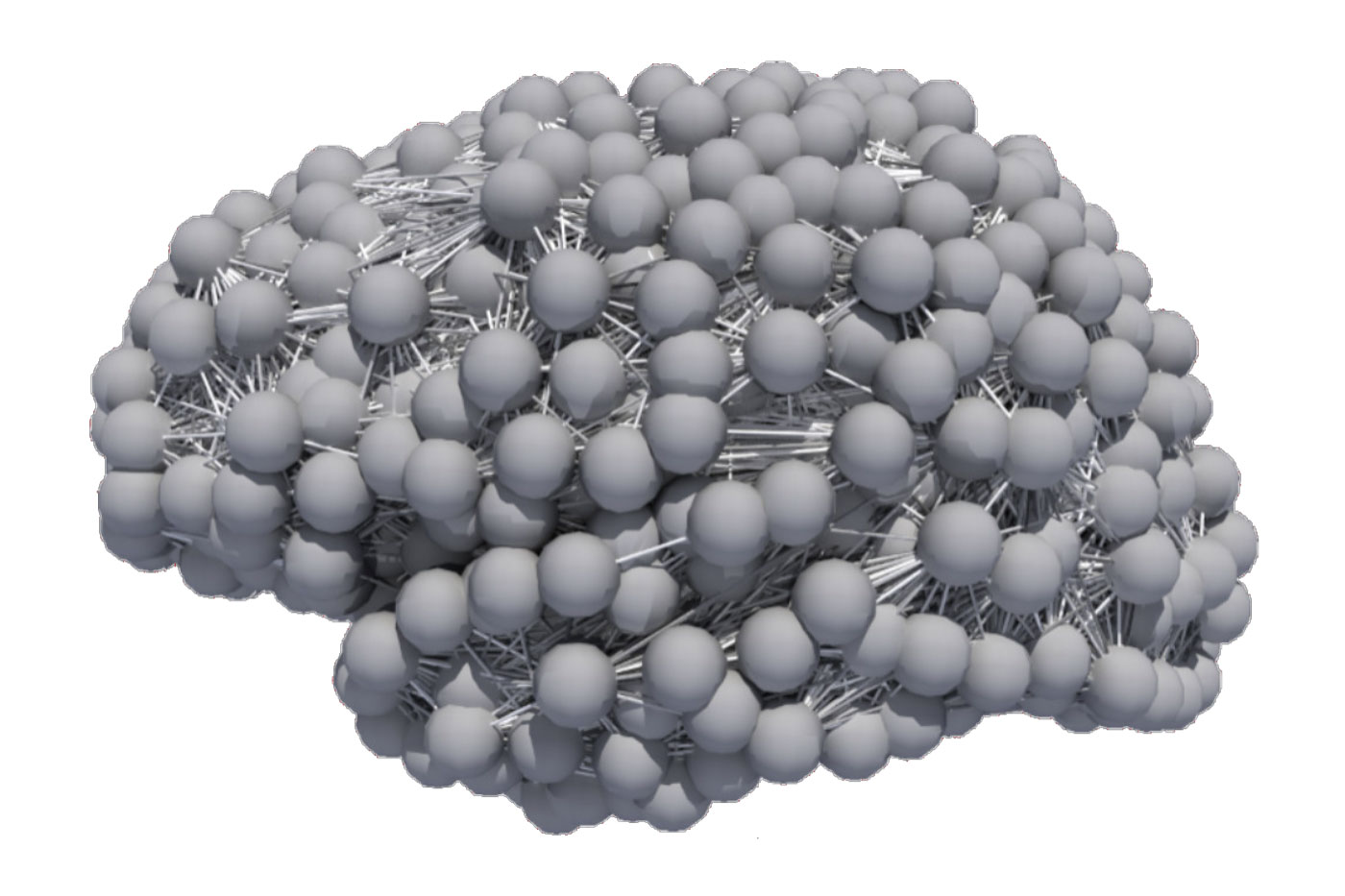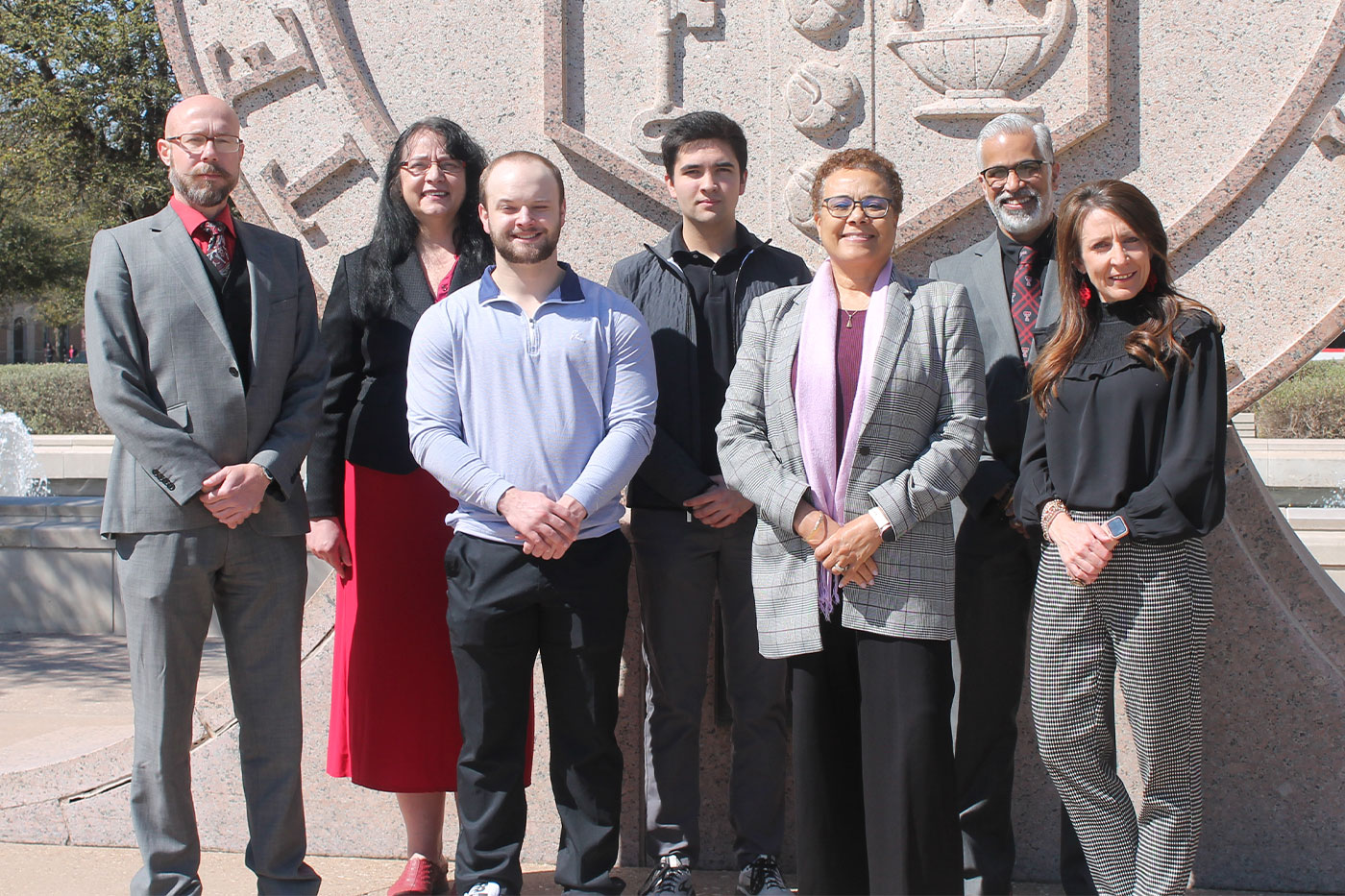Texas Tech researchers are using mathematics to connect nutrition and diabetes to Alzheimer’s disease.
We’re getting older.
That statement is true for every person, every day. It also represents a population trend. People are living longer, and birth rates are slowing across the western world. As a result, the age of the average person is steadily increasing.
The trend is expected to continue and bring with it new health concerns. After all, an aging population naturally produces more age-related health issues. Among those issues are illnesses like heart disease and cancer, for which some effective treatments have been developed, and dementia, which at the moment has no effective treatments.
A group of researchers from Texas Tech University is hoping to change the latter, starting with the most generic form of dementia, Alzheimer’s disease (AD).
In AD, specific brain proteins form clumps toxic to the brain’s tissues. These clumps are thought to cause a significant decrease in mental ability and can eventually contribute to death.
“Experiments conducted in the Department of Nutritional Sciences have already shown that obesity and diet may be linked to AD,” said Horn Distinguished Professor Naı̈ma Moustaı̈d-Moussa.
Aside from being a Horn Professor, Moustaı̈d-Moussa is Texas Tech’s associate vice president for research and the director of the university’s Obesity Research Institute (ORI). She and a group of colleagues are leading the way with experiments, funded by the National Institutes of Health (NIH), that examine how diet and other factors related to obesity link to AD.
“In our recently published results, we showed that dietary fish oil reduced levels of inflammation and toxic proteins that accumulate in the brain and are thought to cause AD,” she said. “We have several views on how the inflammation and cellular stresses of obesity and Type 2 diabetes (T2D) may lead to developing AD.”
The Mathematical Intersection Between Obesity, Type 2 Diabetes, and AD
According to the Centers for Disease Control and Prevention (CDC), 41.9% of Americans suffer from obesity. The CDC also estimates that, by 2030, 33% of Americans could have diabetes, with most of those cases being T2D. Obesity and T2D are associated with several lethal age-related diseases, including AD, because obesity and T2D disrupt the balance between healthy and toxic patterns in the body.
People who are overweight, obese or have T2D are more likely to develop AD and estimates suggest up to 80% of AD patients have T2D. Those numbers suggest a link between the factors that drive obesity, T2D and AD.
In the National Strategy on Hunger, Nutrition and Health, the U.S. government called on researchers to consider how modifiable risk factors, such as better nutrition, decreased obesity and T2D, can help to delay things like AD.
Thanks to nutritional sciences and the ORI, experiments showing the connections between obesity, T2D and AD are becoming clearer, but what does mathematics have to do with any of this?
How do oscillators, algebra, analysis and dynamics relate to obesity, aging, Alzheimer’s and diabetes?
“Mathematics is a language that can be used to frame and explore broad, interdisciplinary problems,” said Magda Toda, a professor and chair of the Department of Mathematics & Statistics at Texas Tech. “The mathematics and statistics faculty really excel at partnering with colleagues across disciplines, and across Texas Tech, to tackle significant problems by developing and applying state-of-the-art mathematical theories and methods.
“The National Science Foundation’s (NSF) latest strategic plan calls on us to consider the science of aging and of complex, non-equilibrium systems like we see in physics and biology. The diverse skill sets of the math and statistics faculty allow us to partner with our colleagues to tackle strategic and challenging interdisciplinary problems.”
The convergence of these disciplines made Texas Tech an ideal partner for the NSF and NIH.
“If you’re in the southern United States and you want to work on the mathematics of neurodegenerative diseases, Texas Tech is one of the best places you can be right now,” said Travis Thompson, an assistant professor of Mathematics & Statistics. “From obesity, diabetes and nutrition to food and crop sustainability, aging, the brain and AD, some of the best interdisciplinary institutes in the USA are all right here in Lubbock, Texas”.
Thompson, who is affiliated faculty within the ORI, was recently awarded $519,500 by the NSF to lead a three-year project probing the deeper connections between obesity, T2D and AD.
“We have the biological, experimental and mathematical expertise to approach this problem right here on the Texas Tech campus,” he explained. “Of course, the problem is incredibly challenging, but that’s the merit in mathematicians working together with the obesity and diabetes experts in the ORI and nutritional sciences.”
The project draws on the collective interdisciplinary experience of Thompson, Moustaı̈d-Moussa and associate professor Vijay Hegde, an NIH-funded pioneer in the use of diabetic drugs as treatments for AD and cancer, to develop new mathematical models that can connect cellular stress, inflammation and insulin imbalance.
“Too much insulin, like we see in T2D, may also switch on certain signals in the brain that make the harmful proteins in AD even worse,” Hegde explained. “In addition, too much insulin can make it more difficult for your brain to get rid of these toxic proteins before they can start to do real damage.”

New scientific computing tools can solve these types of models while integrating experimental and AD patient data. Mathematically, the group will use high-dimensional systems of differential equations posed on human brain networks, like the one pictured above. Thompson first worked with these types of systems during his time at Oxford University.
The group also plans to develop computing tools that help researchers define and solve complex network dynamics models for their own research.
“We can analyze several attributes of these systems using pen-and-paper mathematics alone,” Thompson explained. “With the right computing tools, we can also study how these complex systems evolve, like AD in the brain of patients with diabetes or obesity, using large simulations that bring real data into the models by using machine learning methods.”
The road will not be easy, though. To help with this formidable challenge, Thompson, Moustaı̈d-Moussa and Hegde have recruited mathematics doctoral student Bradley Vigil, a Hildebrand Fellow and Presidential Merit Scholar, and undergraduate Robert Young, a Presidential Merit Scholar, CISER Scholar, TrUE Scholar and Honors College mathematics student, to join the project.
“We are truly lucky to have the interdisciplinary talents of Mr. Vigil and Mr. Young on the project team,” Thompson said. “They know the math, they know computing, and they learn the medical side so quickly; it is quite impressive what they can do.”
“We are incredibly proud of the research being done by our mathematics graduates and undergraduates,” Toda said. “Texas Tech has exceptional students and the work they do every day is making progress on the significant scientific challenges, like AD, that we face as a society.”
Texas Tech is Helping Texans
“We can use this research right here in our own backyard,” explained Molly Forman.
Forman is the northern regional program director for the Texas A&M AgriLife Research and Extension Center. Forman and Moustaı̈d-Moussa are leading the way in bringing Texas Tech’s nutritional science onto the tables of Texas’ many communities. The pair is heading up a project funded by the U.S. Department of Agriculture that partners Agrilife team members with Texas Tech undergraduates as they carry out research and internships in community nutrition and health education across the state.
That work in concert with new mathematical analysis can make big differences while also bringing positive benefits home to Texas.
“Mathematics, paired with data and the expert guidance of our interdisciplinary colleagues, can build new and novel methods that bridge data and the decision makers targeting local, regional and national strategic initiatives while also directly improving the lives of Texans,” Toda said.

Following this vision, Thompson, Vigil and Young will build on both the experimental advances and community integration developed by Moustaı̈d-Moussa, Forman and Hegde by incorporating their expertise and data into mathematical models while joining Agrilife team members in the field, bolstering nutritional security for Texas families.
“If mathematics and experimental data may help us understand what foods and lifestyle habits reduce exposure to diseases like AD, that is integrated scholarship that we can absolutely put to work for Texans,” Forman said.
For Thompson, the multilayer project is a chance to show the true strength of the university while doing impactful work.
“The real strength of Texas Tech is Texans,” he said. “If mathematics can help Americans live longer and healthier lives and reduce the risk that our loved ones will develop terrible diseases like AD as they age, then, as Texans, we are going to step up to that challenge.
“From Here, It’s Possible™.”

